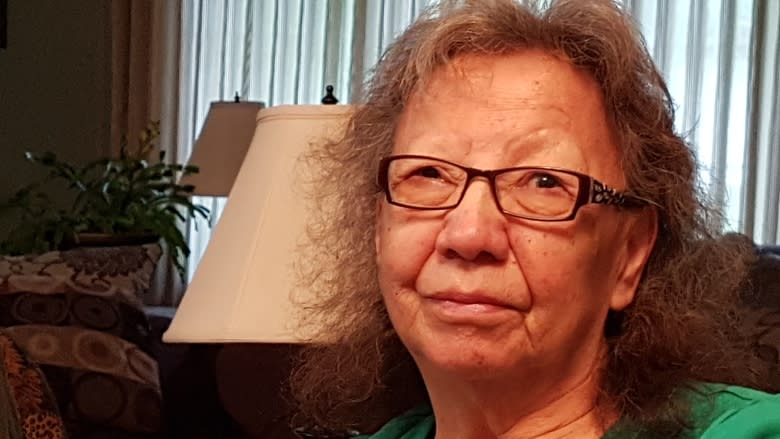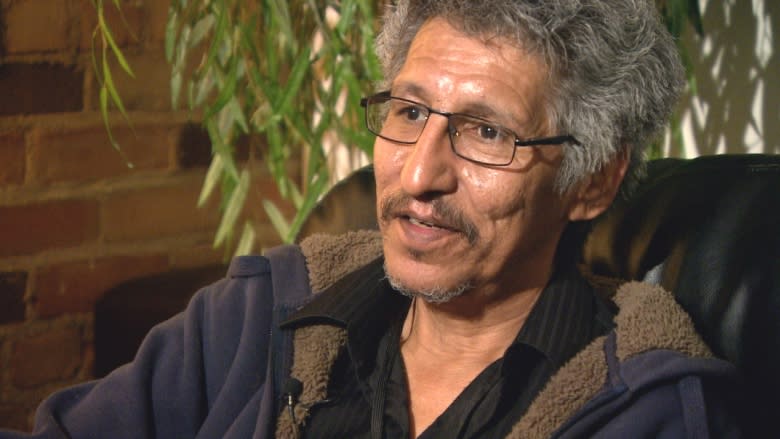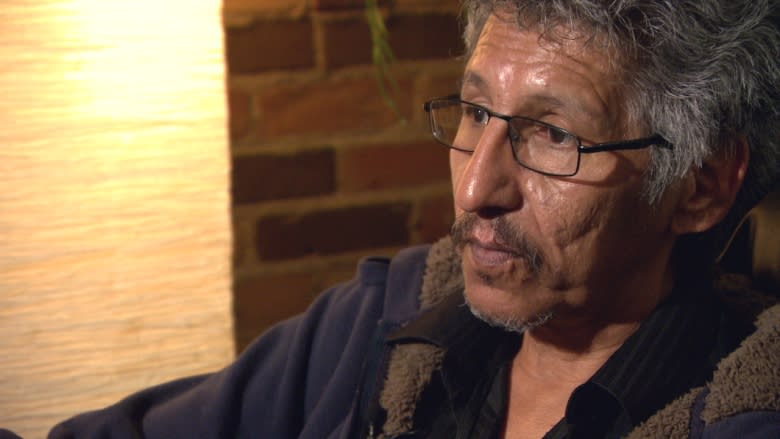'Our people were experimented on': Indigenous sanatorium survivors recall medical tests
Florence Genaille was just a little girl in a Brandon, Man., sanatorium when she says doctors bound her to a gurney, pumped her body with electric currents and then took notes as her fingers curled, her arms shook and her neck strained backwards.
It was 1953. The Ojibway girl from Rolling River First Nation was at the sanatorium to be treated for tuberculosis.
Today, she believes it was no treatment. It was, she says, a medical experiment and she was their "guinea pig" — an assessment that Genaille shares with hundreds of survivors of the sanatoriums, which have been closed for decades.
They're allegations that historians are now investigating.
"I'm telling you, my fingers were beginning to twist sideways, it was so incredibly painful," said Genaille, now 72. "And now to come to the conclusion our people were experimented on — it's an awful thing to think about."
No evidence of tuberculosis
Genaille still does not know why doctors performed the electroconvulsive therapy. She still does not know why she was sent to the Brandon sanatorium.
At the time, she was attending residential school outside Brandon. She had bad leg pain with no known cause. Finally, the nuns decided to send her to the sanatorium, saying she might have tuberculosis in her bones.
She didn't. In fact, years later, a doctor told her she had no evidence of tuberculosis at all.
But that didn't stop doctors from ordering extreme bed rest for six months, so strict that she was not allowed to get off the mattress, even when they changed the bedding.
That didn't stop doctors from slicing open the back of her thigh to explore her bone, only to sew it back up, scarring her for life and leaving her with a permanent limp.
She had been, in the doctor's opinion, experimented on — maybe in good faith, but without merit and without consent.
'A lot of power in the hands of doctors'
Mary Jane McCallum is studying this theory.
McCallum, an associate professor with the University of Winnipeg, is researching what went on in Indian hospitals, as some were called then, and sanatoriums.
She has heard stories similar to Genaille's from other sanatorium survivors and does know this: Indian hospitals were long the training ground for medical students.
Parents of young patients were often hundreds of kilometres away in remote reserves, unaware of the procedures and therefore unable to give consent.
"That meant that there were a lot of unanswered questions and a lot of power in the hands of doctors," McCallum wrote in an email to the CBC.
Gerald McIvor agrees. Back in 1952, his brother Michael was just a child when he was diagnosed with tuberculosis and sent to the sanatorium in Ninette, Man.
Decades later, he bore the scars — disabling, disfiguring markers where doctors surgically removed a back rib and the lung behind it as a theoretical treatment for the tuberculosis.
"He always wondered, 'Why? Why did they do that?'" McIvor said, adding his brother, who died in 2000, remembered the searing pain and little else.
Years later, Dr. A.L. Paine, a pre-eminent physician who was previously the medical superintendent of the Ninette sanatorium, explained he performed these surgeries with just a local anesthetic.
In a January 1979 paper published in the journal Canadian Family Physician titled Tuberculosis: Past, present and future, he wrote local anesthetic was used "to avoid spread of the disease during general anesthesia," and that patients willingly agreed to it.
"Looking back, one must regret the frequent use of chest surgery attended at times by some deformity or reduced respiratory function," Dr. Paine wrote, while arguing "many patients would have died without surgical aid."
Taken from residential schools to sanatoriums
Today, there are other answers, though some are hidden in the history books.
In the first half of the 20th century, tuberculosis on reserves was a significant problem. The thinking at the time was that it was because Indigenous people lived in the wild.
According to an article in the August 1939 Canadian Medical Association Journal, "the Indian is still a wandering wigwam dweller at heart and adapts himself poorly to living in houses" and has "a native stubbornness and intolerance to interference that makes clinic work difficult."
But under the Indian Act, it was legal to seize kids suspected of having tuberculosis and send them to sanatoriums — sometimes directly from their residential school, as in Genaille's case.
It was also seen at the time as a financial win-win, medical historians say. The practice kept numbers up in both residential schools and sanatoriums where funding was tied, in part, to quotas.
So by the 1950s, even though there were better therapies available for tuberculosis patients and therapies that could let them heal at home, Indigenous patients continued to be detained longer — sometimes years longer — than the rest of the population.
McIvor, Genaille and historians don't yet know the full extent or intentions behind what went on in Canada's Indian hospitals and sanatoriums.
But they want to get some answers.
"I think a lot of these doctors learned from experimenting on us," Genaille said. "Why else would just my kind of people be in there and exposed to this?"




